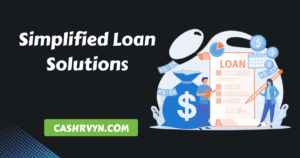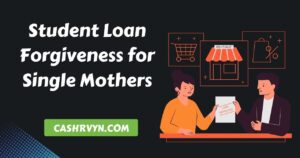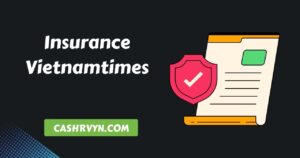Student Loan Forgiveness for Single Mothers are you trying to pay off your college loans as a single mother? You’re not alone. According to a report by the Institute on Women’s Policy Research, single moms have specific hurdles in paying off college loan debt. Ten years after leaving school, individuals are still owing almost three times as much money as their classmates.
Student Loan Forgiveness for Single Mothers
This is a huge burden for single moms, who may have less time and energy to dedicate to paying off their debts and may also face other financial demands, such as daycare fees and the need to sustain their family on a single salary.
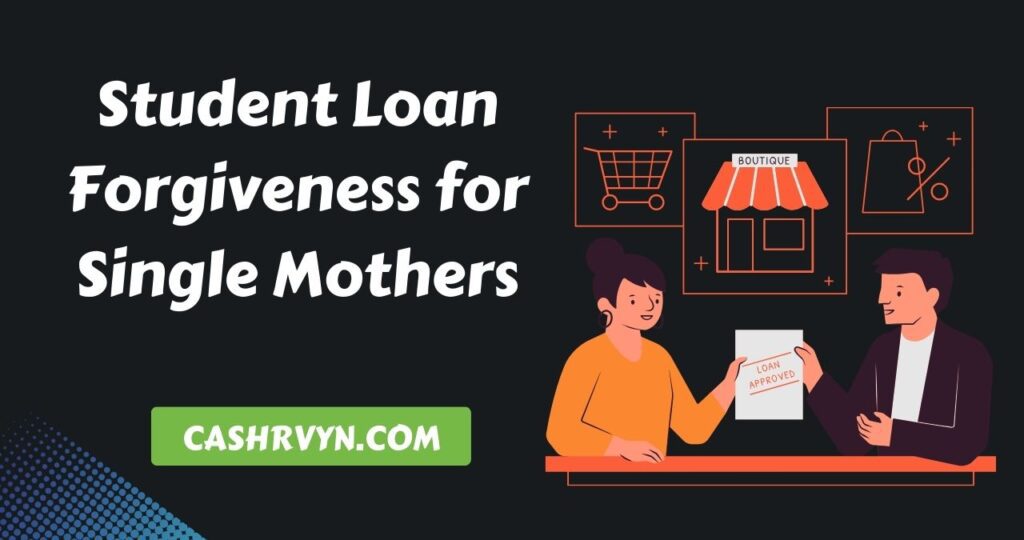
It’s obvious as day: Single moms (and fathers) need student loan forgiveness when they want any shot at providing for their kids, saving for retirement, owning a home, and enjoying the American ideal.
What Are Student Loans?
Simply put, student loans let you borrow money to help you pay for education expenses, either from the federal government or a private lender. Tuition, fees, supplies, publications, rent, living expenses, and other important school-related costs can all be covered with the aid of student loans.
Federal student loans for single mothers
With no age or family limits, federal student loans are a terrific alternative for single mothers.
You must be a citizen or legal permanent resident of the United States with a Social Security number to be eligible for federal student loans. You must complete the Free Application for Federal Student Aid (FAFSA) and submit it before the institution’s deadline if you want to be considered for federal student loans.
Colleges utilize the FAFSA form to assess what kind and how much financial help you are eligible for. You won’t be eligible for federal student loans until the next year if you don’t complete the FAFSA or miss the deadline.
Federal Direct Loans are available to undergraduate students, and graduate students are also eligible for PLUS loans. Parent PLUS loans are another option available to parents of undergraduate students who wish to finance their children’s college education.
Dependent students and independent students are the two categories into which the federal government separates pupils. Federal loan restrictions are greater for independent students than for dependent ones. If a single mother meets the requirements to be an independent student, there may be extra financial help available. On the website for federal student aid, you may determine your dependent status.
What a self-sufficient student may borrow in federal loans and how much of it may be subsidized is as follows:
| Year in school | Total annual borrowing limit | Total that can be subsidized |
| First-year undergraduate | $9,500 | $3,500 |
| Second-year undergraduate | $10,500 | $4,500 |
| Third-year undergraduate and beyond | $12,500 | $5,500 |
| Graduate or professional student | $20,500 | None |
| Aggregate | 57,500 dollars for undergrads and $138,500 dollars for graduate students | Undergraduates receive $23,000, while graduate students receive $65,500. |
What can a single mother use student loans for?
Only eligible educational costs, such as tuition, fees, board and lodging, textbooks, technology, and supplies, may be paid for using federal student loans. Additionally, single moms might be able to utilize their school loans to pay for daycare costs.
You may choose whether you want the maximum amount, enough to pay for tuition and books, or the maximum amount when you apply for federal loans. If you borrow the maximum allowed, you can use any money that is left over after paying for tuition to cover room and board and other necessary costs.
Also Read: Auto Insurance in Massapequa Ny 2023 Infosurabaya?
Can single moms get student loan forgiveness?
Depending on your career, you can qualify for a variety of loan forgiveness alternatives if you’re a single mother with federal student loans.
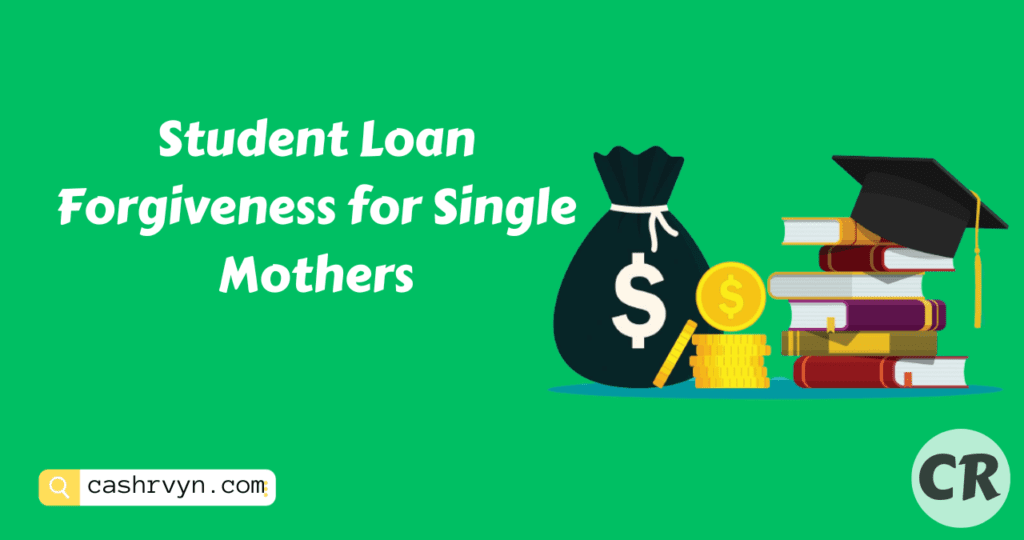
Public Service Loan Forgiveness (PSLF) is one of the most popular solutions. You must complete 120 payments while working full-time for a recognized charity or government agency in order to be eligible for PSLF. Additionally, you must continuously follow an income-driven repayment (IDR) plan. You can request to have the remaining loan sum erased after making 120 payments.
The yearly job certification form, which requests information about the single moms’ work and student loan status, should be filled out by single mothers who qualify for PSLF. By completing this form each year, you can make sure that your payments are accurately accounted for by PSLF.
The following common jobs will be eligible for PSLF:
- Teachers
- The social workers
- Professionals in the medical field, such as nurses and physicians
- Governmental personnel
- Nonprofit personnel
- Members of the armed forces
You have the option of choosing income-driven payback debt forgiveness if your company doesn’t comply with the PSLF standards. Depending on the plan and the kind of loans you have, you must be on an IDR plan for 20 or 25 years to be eligible for this program. Your remaining loan sum will be forgiven after the period is finished.
Borrowers won’t be required to pay taxes on the forgiven debt until 2025. Some analysts predict that this will be around for the duration of the show.
Various loan forgiveness plans are also available for different professions. For instance, the federal Teacher Loan Forgiveness Program grants teachers who have worked five years straight at a low-income school up to $17,500 in loan forgiveness.
For nurses, doctors, pharmacists, psychological counselors, and other health professionals, there are additional loan forgiveness and payback schemes. Lawyers who work for government agencies or organizations can also take advantage of unique debt repayment plans.
Any private firm that calls you and offers to forgive your debt if you sign up with them should be avoided. They can be con artists attempting to steal your identity or trick you into paying for a service that is already provided without charge.
Private student loans for single mothers
Private student loans are an option for single mothers who have exhausted their federal student loan limits and want additional funding. Regrettably, private student loans could be more challenging to get than government loans.
You will frequently need to fulfill credit and income score standards set by private student loan organizations. To be eligible for a private student loan without a cosigner, you typically need a credit score of at least 650. The lender’s required level of income varies.
The cosigner will be held accountable by the lender if you stop making payments or fail on the loan. As long as they satisfy the lender’s conditions, you are free to pick anybody you wish to serve as the cosigner. Most individuals select a family member, a spouse, or a close friend.
You may apply for a student loan from Ascent or Funding U, two lenders who don’t require cosigners for their student loans if you don’t have someone to ask.
How private student loan terms compare to federal loans
Particularly for undergraduate students, private student loans may have debt limitations that are larger than those of government loans. You may be able to borrow up to the yearly cost of attendance less any additional financial help in specific circumstances.
Sadly, private student loans have higher interest rates as well, often reaching double digits. They are also less accommodating and hardly ever provide choices for longer delay and forbearance or income-driven payments.
Also uncommonly available are loan forgiveness plans from private student lenders. There may be certain government and private debt repayment plans that are unique to certain occupations, but they are typically only available to those in the legal and medical fields.
Also Read: Insurance Vietnamtimes | A Step-by-Step Guide 2023
Income-Driven Repayment PlanForgiveness
After making 20–25 years’ worth of regular payments under one of the four categories of income-driven repayment programs, the federal government promises to forgive student loan holders their outstanding debt.
- Plan for Income-Based Repayment (IBR)
- ICR Plan: Income-Contingent Repayment Schedule
- Plan Pay As You Earn (PAYE)
- Pay As You Earn (REPAYE) plan revision
For single moms, especially those with modest incomes, income-driven plan forgiveness can be of great assistance. They can pay off their school debt while lowering their monthly loan payments and having more money for living expenses.
During the epidemic, the Education Department unveiled a new perk: retroactive forgiveness credit.
Beginning in the fall of 2017, the department started looking into borrower accounts to raise the IDR payment count for:
- How many times they’ve paid off student loans using any available plan?
- The period of deferral they had before 2013, except the time they were enrolled in school.
- The time they spent in forbearance periods that lasted at least 12 months straight and more than 36 months overall.
The modifications will instantly erase the loans of 40.000 borrowers and move the forgiveness date for millions of others by at least three years.
You must have loans that are owned by the U.S. Department of Education in order to be eligible for the income-driven repayment forgiveness and IDR waiver programs. Loans owned by Ed alone qualify. In order to be eligible for forgiveness if you attended college prior to 2014 and had privately owned Perkins, Stafford, or Federal Family Education Loans, you must combine them into a direct loan and enroll in an IDR plan. Find out who owns your loans by visiting StudentAid.gov on the Federal Student Aid website, then submit a consolidation request if required.
Public Service Loan Forgiveness
After ten years, the loan debt for single mothers who work full-time for the government or a nonprofit organization might be cancelled. Over $32 billion in federal student debt has been paid off by teachers, nurses, social workers, and other public employees thanks to the PSLF Program in only the last two years.
However, it wasn’t always like that. Prior to the Biden administration’s introduction of multiple adjustments that loosened many of the intricate qualifying restrictions that prevented hundreds of thousands of Americans from receiving the debt relief to which they were entitled, the program was dysfunctional. The software is now much more easily available to individuals who need it, thanks to these adjustments. Explore the PSLF waiver in greater detail.
Now, being eligible for PSLF is much simpler. Simply work for a qualified job for ten years and make 120 qualifying payments on your Direct Loans, and the government will forgive the remainder of your debt tax-free.
President Biden’s cancellation plan
A comprehensive proposal to forgive federal student debt for tens of millions of Americans—many of whom are single moms and fathers in need of relief—was unveiled by President Joe Biden in August. For each borrower, the proposal will erase up to $10,000, or up to $20,000 for those who got Pell Grants, which are grants provided to undergraduate students who demonstrate financial need.
Despite the over 26 million applications for this relief, no one has yet had their debts canceled owing to legal challenges in Texas and Missouri. The Supreme Court is presently reviewing these cases to determine whether the president has the right to use executive action to forgive almost $400 billion in federal student debt. Applications for debt cancellation will probably reopen, giving individuals who haven’t already done so the chance to do so if the court decides they did.
Also Read: Streameast.xyz Review | Is Streameast.xyz Legit?
Total and Permanent DisabilityDischarge
If a physical or mental impairment prevents you from working, the Department of Education will forgive the balance you still owe on your federal student loans. Your disability is a factor in the alleviation. If your child is handicapped and you took out Parent PLUS Loans to pay for their education, you cannot get the debt discharged because you are still able to work.
In order to apply, you must provide documentation supporting your claim from your doctor or psychiatrist, the Social Security Administration (SSA), or the U.S. Department of Veterans Affairs. Visit DisabilityDischarge.com for more info.
Help for private student loans
Compared to government student loans, private lenders like Sallie Mae and SoFi provide fewer alternatives for loan forgiveness. Lenders often only release your debt if you pass away, become permanently handicapped, and are unable to work again. They won’t agree to reduce your debt or waive your interest because you are employed by the government, have made payments for many years, or have already repaid the amount you borrowed.
There are a few jobs that provide repayment plans for federal and private student loan debt. However, those schools often only accept attorneys, medical experts, and active military personnel.
Consider refinancing if you’re a single mother who is suffering from private student loan debt. While refinancing won’t reduce your amount, if you can acquire a lower interest rate and a longer repayment period, it may be able to reduce your payments. To secure the best rates, you’ll need a high credit score and enough money to pay your debts in addition to the new loan. To compare offers from several student debt refinancing lenders at once, use an online marketplace like Credible.
Not everyone can refinance, particularly if they have been a single mother for some time and have had to manage all of the household expenses on their own. You could not have the required credit score to be accepted or the necessary funds to make your student loan installments.
Your only choices could be to cease making payments in the hopes of settling or to go to bankruptcy court and request that the judge dismiss your student debts. Although neither option is desirable, it could be your last chance to pay off the debt.
Help for single mothers paying for college
Regardless of their credit rating, income level, or family size, all single mothers are eligible for federal student loans. As a citizen or lawful permanent resident of the United States with a Social Security number, you qualify. The Free Application for Federal Student Aid (FAFSA) must be finished by the time set by the institution. This information will be used by your school to offer you federal loans, work-study options, grants, and scholarships to help you pay for your education.
These funds can be used to pay for tuition as well as other higher education costs, including books, lab fees, transportation, housing, and child care. If you require further financial aid while attending college, ask your employer or state whether they have any payback assistance programs, such as tuition reimbursement or programs to help defray the cost of food and medical care.
Alternatives to student loans
If you’re a single mother, you could be eligible for additional forms of financial help, including grants and scholarships. Grants and scholarships do not require repayment, in contrast to student loans. Therefore, they are often a better choice for pupils.
You are most certainly qualified for need-based help, such as the Federal Supplemental Educational Opportunity Grant (FSEOG) and other federal and state grants like the Pell Grant. Both the FSEOG award and the Pell Grant have annual maximums of $6,895 and $4,000, respectively.
Some single moms could also be eligible for work-study, a kind of financial help in which students are offered jobs on campus or with related organizations. Work-study positions typically range from 10 to 15 hours per week and are paid at or just above the minimum wage.
Fill out the FAFSA
Simply by completing the FAFSA, the same form you must complete for federal student loans, you can become eligible for work-study and government awards. To be eligible for federal financial aid, make sure to submit the FAFSA each year.
Because certain grants, like the FSEOG, are only accessible on a first-come, first-served basis, try to complete the FAFSA as soon as you can. Additionally, many institutions have a cap on the number of internal awards and scholarships they may offer.
Additionally, you want to research merit- and need-based scholarships. Inquire about the process for applying for internal scholarships at the institution and whether a different form has to be filled out. Don’t be embarrassed to let the school know that you’re a single mother; they could have extra resources for parents who are also college students.
Finally, use third-party websites to look for scholarships.
Look for scholarships intended especially for parents or single parents, if at all feasible. Additionally, search for scholarships that are relevant to your field of study, interests, or upbringing. For instance, if you’re a first-generation college student, look for scholarships that are designed for people like you.
Bottom Line
Programs offered by the federal government help single moms get out of debt they accrued long ago to pay for their undergraduate degree. Some programs offer relief right away, while others take ten years or longer.
Refinancing may result in a reduced interest rate for private student loans, but it won’t lessen the overall total. For that to occur, you’ll need to enter into settlement talks or declare bankruptcy.
Have a look at some amazing Articles that I have given below:
- Auto Insurance in Massapequa Ny 2023 Infosurabaya
- Insurance Vietnamtimes | A Step-by-Step Guide 2023
- Streameast.xyz Review | Is Streameast.xyz Legit?
- Days Loan Review: Is Days Loan Legit or Not?
Follow Chance: Threads, Twitter, Instagram, and Mastodon.

